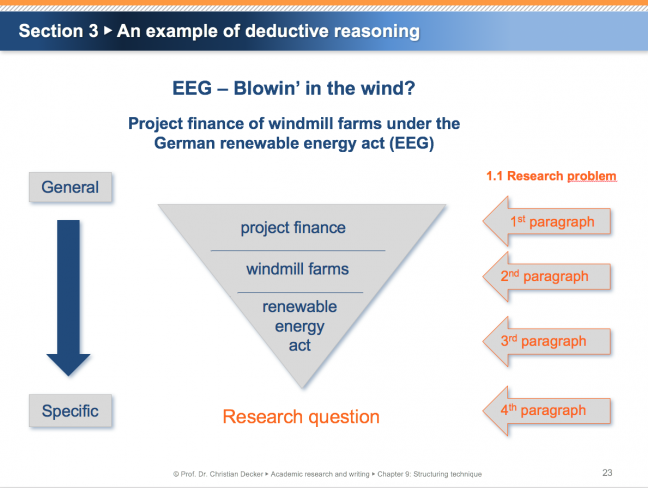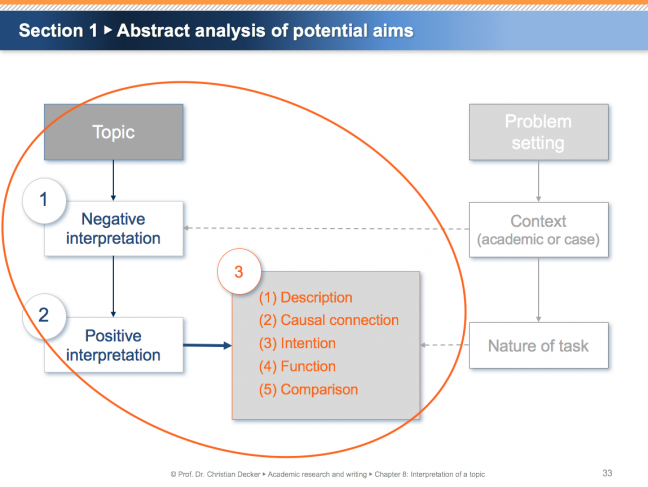A research problem needs to be clarified and has to be transformed into a precisely formulated research question. This is done in the chapter “research problem”. A pragmatic way to structure the chapter “research problem” is to apply the concept of deductive reasoning. According to deduction, the writer advances from paragraphs with general information to paragraphs with a higher specificity and ends with the research question. Simultaneously, the research problem with its research question determines the overall structure of the research paper, i.e. the outline. Once an aim has been identified, its implicit logic prescribes the structure of the outline. Moreover, the outline should be aligned with the structure of the chapter “course of investigation” and, if applicable, with a chapter “research method”. A research paper ends with a conclusion that can be segmented into three subchapters: summary of research findings, critical acclaim and outlook. Again, the summary of the findings should be aligned with the structure of the research problem and the outline of the main body. Finally, it is good style to critically reflect upon one’s own research findings in the subchapter “critical acclaim” and to provide an outlook regarding potential future developments in the subchapter “outlook”.
Link to e-learning videos: Overview of chapter 9


